Rotator Cuff muscles strengthening exercise
Table of Contents
What is the Rotator Cuff?
- Rotator Cuff muscle strengthening exercise is a great way to increase strength as well as stability of shoulder joints & also decrease the risk of Rotator cuff injury risk & many health benefits associated with this exercise.
- The Rotator cuff is a group of four muscles & their tendons. Which assists to provide strength & stability to the shoulder joint while its motion. These four muscles are the supraspinatus, infraspinatus, subscapularis, & teres minor. These originated from the scapula & connect to the humeral head, forming a cuff around the glenohumeral joint.
What are the functions of the rotator cuff muscles?
- The rotator cuff muscles work in tandem for executing a variety of upper limb motions, which may include shoulder flexion, abduction, as well as internal & external rotation. The rotator cuff plays an essential role in any shoulder-related movements and is essential in providing stability to the shoulder joint helping in keeping the head of the humerus within the small glenoid fossa of the scapula. any abnormality that happens in the rotator cuff group of muscles may lead to shoulder pain & discomfort, decreased or impaired functional capacities, & may also affect daily activities & negatively impact the quality of life.
- The shoulder joint is a ball-and-socket joint that connects the upper arm bone to the shoulder blade. These rotator cuff muscles attach to the bones of the shoulder joint, & these make the rotator cuff. Doing these exercises can help the patient to prevent injury to the shoulder joint. The rotator cuff has many functions. The muscles do the following: center the upper arm bone in the socket of the shoulder joint & hold it their power arm as well as shoulder movements
- The shoulder joint is the most mobile joint of the body. This is possible to misuse or overuse this joint, which makes this very easy to injure the rotator cuff & other parts of the shoulder.
- Individuals can help prevent injuries by performing these exercises to keep the rotator cuff muscles strong as well as flexible. These muscles can be prone to inflammation & tears if the patient does the same overhead movements too much. An important way to decrease tears or rotator cuff injury is to make sure these muscles are strong enough. The exercises below will show the patient how to do just that to prevent injury and pain.
Health benefits of Rotator cuff muscle exercises
- This exercise is designed to build muscle around the shoulder joint.
- Helps to decrease pain in the shoulder joint: This exercise will strengthen muscles, & stronger muscles provide the joint with better support.
- One danger of shoulder arthritis is that every person avoids activities that cause pain or even discomfort, causing shoulder muscles to atrophy.
- Helps to maintain function & activities of daily living such as pushing & pulling objects.
- Helps to support healthy cartilage. Joint cartilage needs movement & a certain amount of stress to stay healthy. Synovial fluid is stored in cartilage namely water in a sponge.
- Helps to increase the shoulder joint range of movement & its function.
- This exercise gives stability & this can help you to prevent bone dislocation as well as protect bones from impact & friction, thereby decreasing pain.
Different types of Rotator cuff exercises
Arm reach
- How to do this strengthening exercise:
- To do arms reach, the patient should Lie flat on the back, straighten the arms as well as legs, & brace the abdominal muscles.
- Reach the right arm toward the sky, lifting this until the shoulder blade comes off the floor.
- Hold this for five seconds.
- Return the arm to the floor.
- Repeat on the left side. Do ten repetitions in one session. Do two sessions per day.

Lying down the external rotation
- How to do this exercise:
- For this exercise the patient has to Lie on the left side of the body on a firm surface, holding the dumbbell in the right hand.
- Flexed the right elbow to ninety degrees, keeping the right arm against the side of the body & letting the weighted hand rest toward the floor in front of the body.
- Keeping the elbow against the side of the body, rotate the arm at the shoulder, bringing the dumbbell toward the roof.
- Slowly lower the weighted arm back to the starting position.
- Repeat on the left side of the body.
- Place a small towel roll in the armpit during performing this exercise to reduce stress on the shoulder joint.
Pendulum
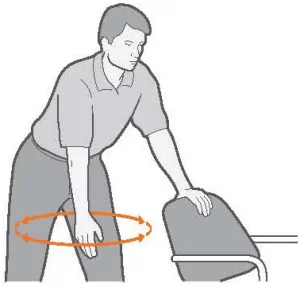
- How to do this strengthening exercise:
- For this exercise, the patient has to lean forward with the right arm hanging freely. Use the left arm to brace against the chair for support.
- Lean forward with one arm hanging freely. Use the other arm to brace against the chair for support.
- Gently swing the right arm from side to side, forward & back, as well as in a circular movement.
- Slowly go back to the standing position.
- Repeat on the left side.
High-to-low rows
- How to do this strengthening exercise:
- To do a high-to-low row Attach the resistance band to some steady object at or above shoulder height. Be sure this is secure so it does not come to loss when you pull on it.
- Get down on the single knee so the opposite of the injured arm is raised. The body & lowered knee should be aligned. Rest the other hand on the raised knee.
- Grab the band securely with the arm outstretched, & move the elbow toward the body. The back should be straight as well as squeeze the shoulder blades together & down as you pull.
- The body should be stable as compared to the arm.
- Come back to the starting and repeat 2 sets of 15 repetitions in one session. Do two sessions in one day.

Reverse fly
- How to do this strengthening exercise:
- For the reverse fly exercise, the patient has to Stand with the feet shoulder-width apart & the knees slightly flexed. The back should be straight as well as bend forward slightly from the waist.
- With the light dumbbell in both hands, straighten the arms & raise them away from the body.
- Do not lock the elbow. Contract the shoulder blades together as you do so. Do not raise the arms above shoulder height.
- Come back to the starting position and repeat 2 sets of 15 repetitions in a session. Do two sessions in a day.
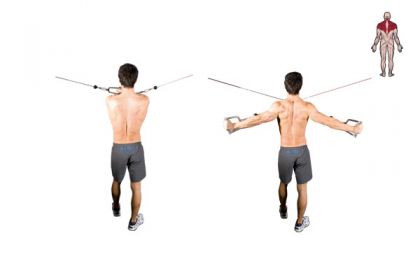
Lawnmower pull
- How to do this exercise:
- For the Lawnmower pull the patient has to Stand with the feet shoulder-width apart. Place one end of the resistance band under the foot opposite the injured arm. Hold the second end with the injured arm, so a resistance band goes diagonally across the body.
- Keep the other hand on the hip & without locking the knees, flexed slightly at the waist so the hand holding the band is parallel to the opposite knee.
- As if embarking a lawnmower in slow motion, straighten upright during pulling the elbow across the body to the outside ribs. The shoulders should be relaxed & squeeze the shoulder blades together as you stand.
- Repeat 2 sets of 15 repetitions in one session. Do two sessions in a day.
Doorway strengthening
- Warm up the muscles by standing in the open doorway & spreading the arms out to the side.
- Grip the sides of the doorway with each hand at or below shoulder height, & lean forward through the doorway until the patient feels a light stretch.
- Keep a straight back as the patient leans & shifts the weight onto the toes. The patient should feel a stretch in the front of the shoulder.
- Do not overstretch.
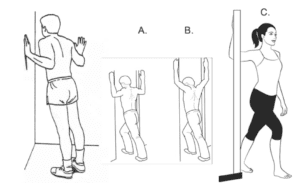
Crossover arm stretch
- The crossover arm stretch involves the steps below:
- Lift one arm so that this is perpendicular to the ground & extend this straight without locking it.
- Take the wrist of the extended, lifted arm with the opposite hand.
- Gently pull an arm across the front of the body, trying to hug the chest with the arm.
- Hold the stretch for 5 seconds before slowly releasing it.
- Repeat on the other side as well.
Two-arm wall stretch
- People may perform this stretch by doing the following: Stand up straight with the back against the wall.
- Raise each arm sideways into the L-shape with the upper arms parallel to the ground, keeping the arms as flat against a wall as possible.
- Maintaining the elbow bend, move the arms up the wall to bring the hands closer together & then move them back down.
- Return to a resting position.

Standing Row
- This exercise works on the middle as well as lower trapezii muscles.
- The patient will need the elastic stretch band for this particular exercise. Make a 2.5 to 3-foot-long loop with the elastic band. Tying the ends together, attach the loop to the firm & stable object. Keeping the elbow bent at the side, hold the band & with the arm close to the side, pull the elbow straight back.
- Slowly come back to the starting position & repeat, performing at least two sets of 10 for each arm in one session. Do two sessions in one day.
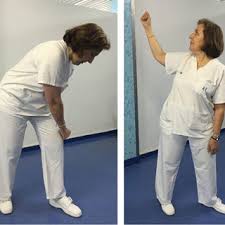
Internal Rotation with elastic band
- This works at achieving a subscapularis stretch & also stretches the pectoralis muscle.
- The patient will need the elastic stretch band for this particular exercise.
- Make a 2.5 to 3-foot-long loop with the elastic band. Tying the ends together, attach the loop to the firm and stable object as well. Keeping the elbow bent & pressed into the side, hold the band & with the arm close to the side & bring the arm across the body.
- Slowly come back to the start position & perform at least two sets of 10 for each arm in one session. In one day.
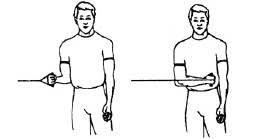
External Rotation with elastic band
- This works at achieving an infraspinatus stretch and also stretches the teres minor as well as posterior deltoid muscles.
- The patient will need the elastic stretch band for this particular exercise. Make a 2.5 to 3-foot-long loop with the elastic band.
- Tying the ends together, attach the loop to the firm & stable object. Keeping the elbow bent & close to the side, slowly rotate the arm outward & then come back to the embarking position, performing at least two sets of 10 for each arm in session. Do three sessions in a day.
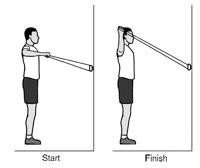
Scapula Setting
- This exercise works to strengthen the middle trapezius as well as the serratus musculature.
- The patient should lie face down with the arms by the side & then gently draw the shoulder blades together as well as down the back as far as possible.
- Hold this position for around ten seconds & relax. Repeat this around eight to ten times.
Scapular Retraction
- This exercise also works to strengthen the middle trapezius as well as serratus musculature.
- The patient should use weights suitable for you & ideally add weight in 1-pound increments to a maximum of 5 pounds.
- Lie face down on the bed or table, keeping the injured arm hanging over the side. Keep the elbow straight & lift the weight slowly by squeezing the shoulder blade towards the opposite side as far as possible & then slowly return to the embarking position.
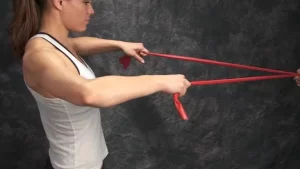
Elbow Raises
- The third one may look easy but requires some concentration to be performed correctly. The patient finds using a dining room table works well for this exercise. Lie on the tummy with one arm hanging off the side.
- Start with the arm hanging straight down, then draw the shoulder blade down towards the hips. Whilst maintaining this position gently pull the shoulder back towards the roof, into a tucked position.
- During these two motions, the arm should still be hanging straight down. Maintain this tucked position & slowly raise the elbow up to just below shoulder height. Make sure that the forearm is vertical & the upper arm is at 90 degrees to the side.
- Slowly lower the arm back to the embarking position & repeat.
- Complete 3 sets of 10-15 repetitions.
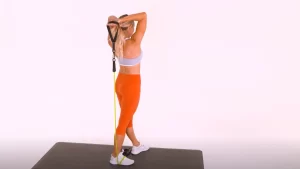
When did the patient not do the Rotator Cuff muscles strengthen exercise?
- If the shoulder joint is recently injured.
- If the arm bone is recently fractured.
- If the patient has severe pain in the joint.
- If the doctor advised the patient to take rest.
- If you feel any pain or discomfort while doing these exercises then stop immediately & consult the physical therapist or doctor.
FAQ
Why is the rotator cuff so weak?
Commonly, rotator cuff muscles weaken when the patient has shoulder tendinitis or bursitis. It is why physician often prescribes physical therapy for these conditions. One of the most common causes of structural weakness in the shoulder is the rotator cuff tear.
Should the patient work out the rotator cuff every day?
While it probably is not unsafe to perform rotator cuff exercises every day, the rotator cuff muscles, just as others in the body, require time to recover between exercise sessions.
Can the patient heal a rotator cuff naturally?
Conservative treatments — like rest, ice, and physical therapy — sometimes are all it’s needed to recover from a rotator cuff injury. If the injury is severe, he might need surgery.
What exercises should the patient avoid with the rotator cuff injury?
Individuals with shoulder injuries should initially refrain from exercises that encourage any motion or movement overhead. Forget about activities such as throwing a ball or even specific weight training at the gym like overhead presses and pull-ups.
Can exercises make the rotator cuff tear worse?
In short, exercise may have helped individuals feel fewer symptoms from their rotator cuff tear. The authors concluded, “shoulder activity level was not related to tear progression risk“.
How can the patient fix the rotator cuff at home?
Moist heat, namely a hot bath, shower, or heat pack, can help loosen up the shoulder when you feel pain in the shoulder. An ice pack applied to the shoulder 20 minutes at a time, 3 to 4 times a day, may also help cut down the swelling when you are in pain. Wrap the ice pack in a clean towel or cloth.

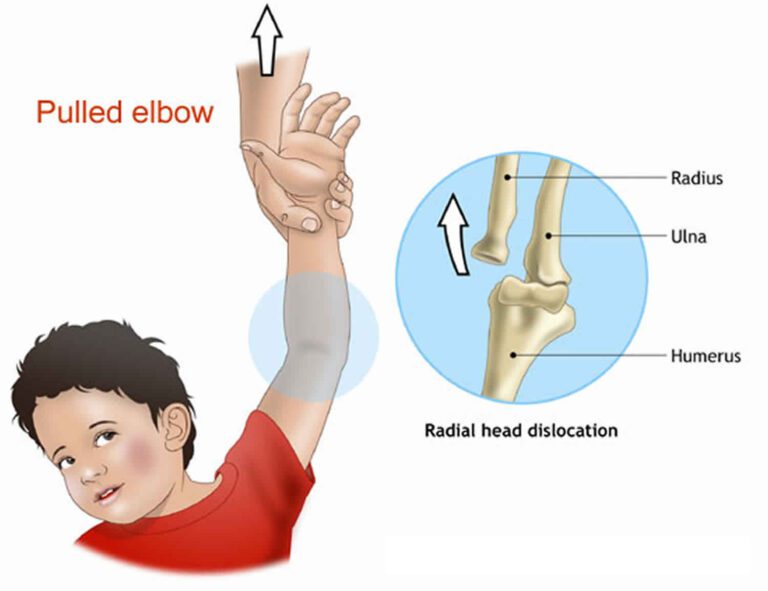

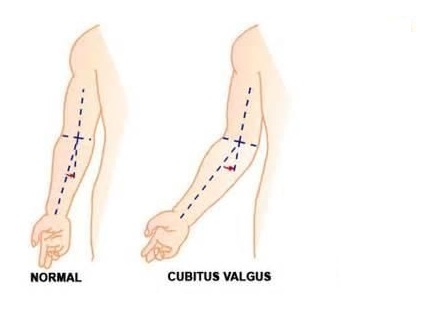
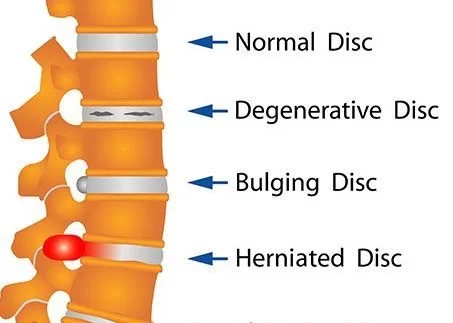
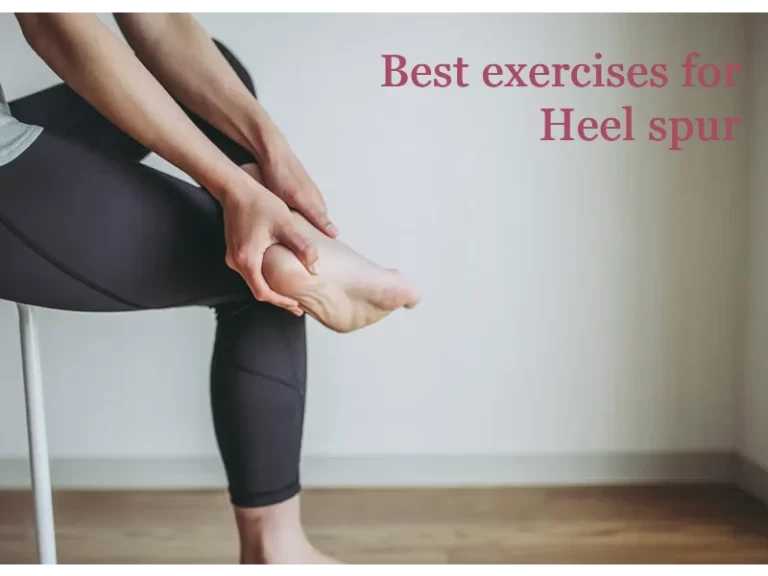
One Comment